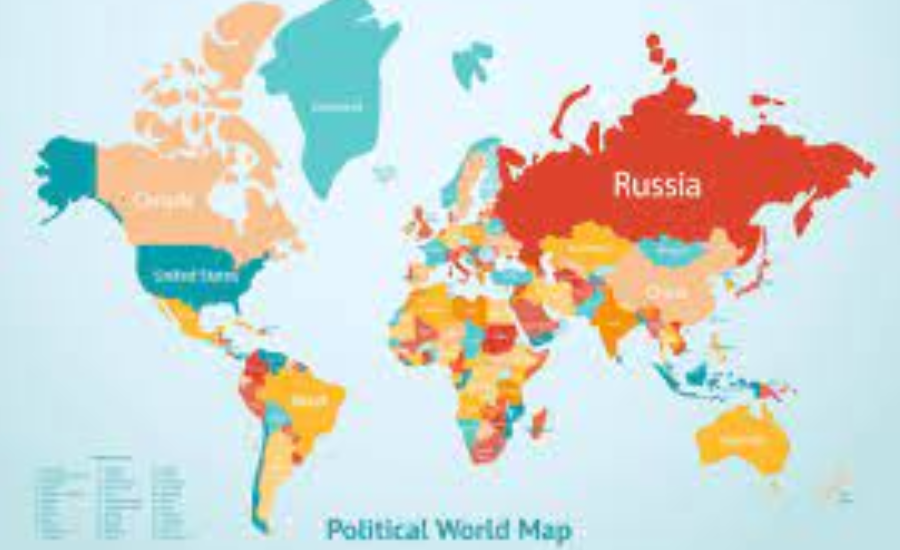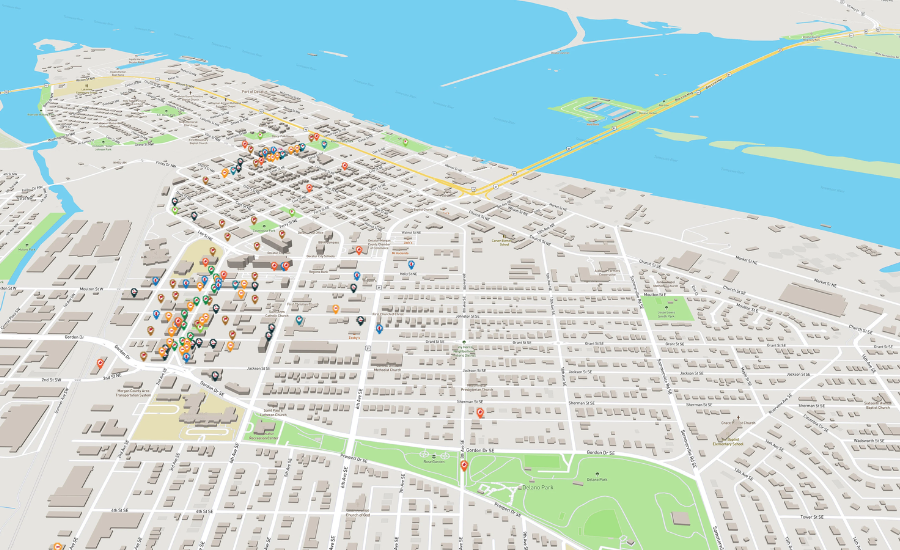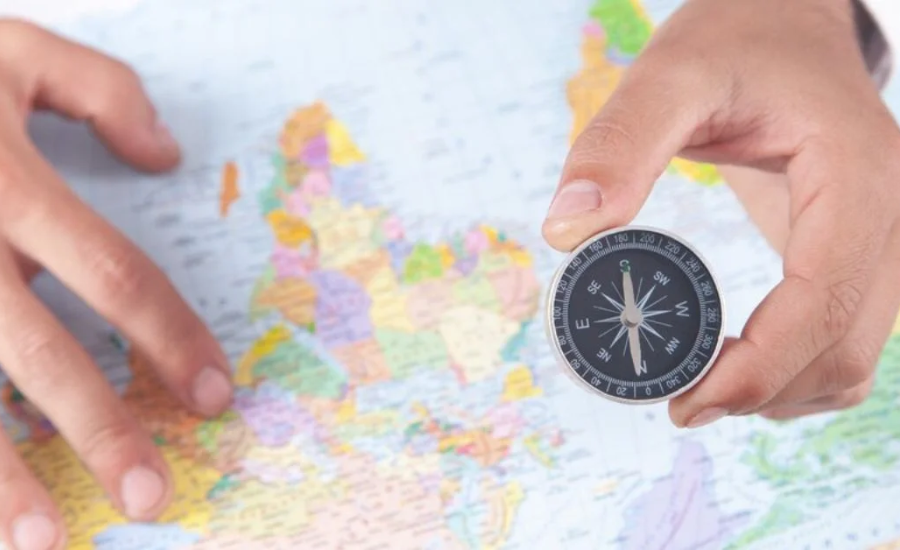visualization. The shift from traditional paper maps to dynamic web-based platforms is truly astonishing. In this blog, we introduce Ùmap—an impressive and versatile tool designed for mapping, data visualization, and geographical analysis.Join us as we delve into how Ùmap is transforming the future of mapping technologies, unlocking a myriad of new possibilities!
The Evolution of Mapping: From Paper Maps to Digital Platforms
In the past, people relied on unrolling paper maps to navigate their routes. Today, mapping technology has undergone significant advancements, dramatically changing how we find our way and explore the world. The transition to digital platforms has revolutionized navigation and exploration.
Digital mapping technologies now offer real-time updates and dynamic features that enhance our spatial awareness, making the days of getting lost in a maze of streets a distant memory. With just a few clicks, we can access global satellite images, street views, and 3D models.Beyond the obvious convenience, digital maps have unlocked new possibilities for spatial research and data visualization. These adaptable technologies have become indispensable across various fields, including urban planning, disaster response, and environmental monitoring.
As technology continues to evolve, we can anticipate even more groundbreaking innovations in mapping. These advancements will further transform how we interact with and understand our environments, opening up a world of new possibilities.
The Emergence Of Advanced Mapping Technologies
In today’s dynamic digital era, mapping technologies have evolved to become more powerful and adaptable than ever. The shift from static paper maps to interactive web platforms has transformed how we navigate and visualize data.Versatile mapping technologies like Geographic Information Systems (GIS), virtual reality maps, and interactive online maps are revolutionizing the field. These tools enable anyone to create, customize, and share their own interactive maps with ease.
By integrating spatial analytics, these platforms allow businesses across various industries to gain deeper insights and make more informed decisions. As technology continues to advance rapidly, we can expect even more groundbreaking innovations in mapping. Stay tuned, as these cutting-edge technologies are set to transform the way we interact with geographical data!
Types Of Ùmap

Geographic Information Systems (GIS) have revolutionized our ability to examine and understand geographical data. By overlaying multiple data sets, GIS enables us to discern patterns and trends that might otherwise go unnoticed. This capability is invaluable for regional and city planners, environmental managers, and emergency responders who rely on GIS for informed decision-making and strategic planning.
Virtual Reality (VR) and Augmented Reality (AR) maps are pushing the boundaries of mapping technology by providing fully immersive experiences. These advanced tools allow users to visualize data in a more engaging and dynamic way, making complex information easier to comprehend and interact with.
The rise in popularity of interactive web maps can be attributed to their convenience and accessibility. These maps allow users to create custom views, share data seamlessly, and collaborate in real-time, enhancing both personal and professional projects.
Each of these flexible mapping systems offers unique features tailored to the needs of various sectors, making them indispensable tools in the digital era. As we continue to navigate this technological landscape, the capabilities of GIS, VR, AR, and interactive web maps will only become more integral to our understanding and interaction with geographical data.
Geographic Information Systems (GIS): A Revolution in Mapping
Geographic Information Systems (GIS) revolutionize geographical data handling, providing powerful tools for navigation, data visualization, and spatial analysis. GIS enables users to create customized maps, enhancing data interpretation and understanding. By integrating diverse geographical data, GIS reveals trends, patterns, and correlations invisible on traditional maps, offering valuable insights for applications like demographic analysis and optimal business location selection.
Its applications span numerous fields, including public health, emergency management, urban planning, and environmental management.
Virtual And Augmented Reality Maps
Virtual and augmented reality maps have significantly transformed the way we interact with digital geographic data, bringing an unparalleled level of immersion and interactivity. These advanced mapping technologies overlay computer-generated information onto our real-world environments, creating a seamless blend of virtual and physical worlds.Virtual reality (VR) maps enable users to explore realistic 3D landscapes without leaving their homes or workplaces.
Augmented reality (AR) maps, on the other hand, enhance our real-world perception by overlaying digital information onto our physical surroundings using AR devices and smartphones. This innovative approach has countless applications in various fields, including education, gaming, tourism, and navigation. AR maps provide interactive and informative experiences that enhance learning, entertainment, and exploration.
By merging virtual elements with real-world environments, VR and AR maps open up new possibilities for data visualization and geographical analysis. These technologies are revolutionizing the way we engage with spatial information, making it more accessible, intuitive, and impactful across numerous sectors.
Dynamic Web-Based Mapping With Ùmap

The advent of interactive online maps has revolutionized the study and exploration of geographical data, offering a dynamic platform that seamlessly integrates technology with cartography. These maps provide users with the ability to visualize information within a geographical context, enhancing understanding and decision-making.Creating, editing, and sharing maps online has never been more accessible, thanks to these intuitive tools. Users can effortlessly add multiple layers of data, including demographic statistics and environmental features, with just a few clicks.
Moreover, interactive online maps make interacting with geographic information more engaging and informative. Users can zoom in on specific areas, switch between various map views, and access real-time updates to make informed decisions.
Whether you’re involved in urban planning or simply exploring the great outdoors, interactive online maps offer a valuable tool for navigating the digital landscape and unlocking the potential of geographical data.
Advantages Of Using Ùmap
Imagine having the ability to perceive data in a completely transformative way, offering insights that empower you to make decisions with unparalleled clarity. This is precisely the promise of flexible mapping technologies: a powerful tool for geographical analysis, data visualization, and navigation.
One of the key advantages of these systems lies in their ability to provide dynamic information and real-time updates. Flexible mapping tools provide instant access to the latest data, useful for tracking traffic, monitoring the environment, and analyzing trends.
These platforms enable users to create maps customized to their specific needs and preferences. The versatility of mapping technology opens up a myriad of possibilities for map customization.adjusting
Diverse Industry Applications
The emergence of versatile mapping technologies has unlocked a wealth of opportunities for businesses and organizations across various sectors, catalyzing transformative advancements. These tools play a pivotal role in urban planning and development, enabling stakeholders to visualize future city landscapes, plan infrastructure projects, and optimize traffic management strategies.
In the healthcare sector, mapping technology revolutionizes disease outbreak monitoring, facilitates optimal placement of healthcare facilities, and enhances emergency response capabilities. By leveraging spatial data, businesses gain insights into customer behavior, demographic trends, and strategic location optimization for retail stores.
Precision farming, driven by mapping technology, empowers farmers to boost crop yields through soil analysis and more efficient resource allocation, thereby driving innovation and sustainability in agriculture. Real-time mapping data facilitates disaster management efforts, organized rescue operations, and post-event damage assessment.
The potential applications of flexible mapping technologies are vast and diverse, spanning from logistical optimization to environmental conservation efforts, underscoring their indispensable role in driving innovation and progress across industries.
Navigating Constraints And Boundaries
Exploring the realm of flexible mapping technology comes with its share of challenges. Many users grapple with the steep learning curve associated with complex GIS software or navigating virtual reality map interfaces. This hurdle often deters individuals from fully leveraging these tools for geographical analysis, data visualization, and navigation.
Moreover, the potential for inaccurate mapping data poses a significant limitation, stemming from factors such as erroneous data entry or outdated information. Industries reliant on precise location accuracy, such as emergency response and urban planning, must prioritize the verification and validation of mapped locations.
Technological barriers also present obstacles, particularly in integrating disparate datasets from diverse sources into a cohesive map. Additionally, ethical considerations loom large, with privacy concerns surrounding the disclosure of sensitive geographical information and location tracking.
Advancements on the Horizon
We stand at the threshold of a transformative era in mapping technology, marked by revolutionary advancements and groundbreaking discoveries. The integration of AI and machine learning technologies promises to completely revolutionize how maps are created and utilized.Real-time data updates and 3D mapping technology offer users dynamic, immersive, and current information for navigation.
The application of improved geospatial visualization tools will lead to better decision-making in various fields, ranging from urban planning to disaster management. The integration of mapping technology with Internet of Things (IoT) devices will unlock new opportunities for smart cities and efficient resource management.
The future holds immense promise for flexible mapping technologies, with the potential for further expansion of their capabilities and broader applications across diverse sectors. As we continue to push the boundaries of innovation, the possibilities for the future of mapping technology are boundless.
Frequently Asked Questions FAQs About Umap
What is Ùmap?
Ùmap is a versatile open-source mapping tool designed for mapping, data visualization, and geographical analysis. It offers users the ability to create, customize, and share interactive maps seamlessly.
What are the advantages of using Ùmap?
Ùmap provides dynamic information and real-time updates, empowering users with the latest data for informed decision-making. Its customizable features allow users to tailor maps to their specific needs, while its collaborative capabilities facilitate real-time collaboration on map editing and sharing.
What challenges are associated with flexible mapping technologies?
Users may face challenges such as the steep learning curve of complex GIS software, potential inaccuracies in mapping data, technological barriers in data integration, and ethical considerations regarding privacy and data disclosure. However, ongoing technological advancements are dedicated to addressing these challenges and enhancing the efficacy of mapping systems.
What future developments can we expect in mapping technology?
The future of mapping technology holds promise for advancements such as real-time data updates, enhanced 3D mapping technology, improved geospatial visualization tools, and integration with Internet of Things (IoT) devices. These developments will further revolutionize how maps are created, utilized, and integrated into various sectors.
Conclusion
In conclusion, flexible mapping technologies like Ùmap are revolutionizing the field of mapping. With dynamic features, real-time updates, and customizable capabilities, these tools empower users across various industries to make informed decisions and explore new possibilities in navigation, data visualization, and geographical analysis. Despite challenges, ongoing advancements and future developments promise to enhance the effectiveness and impact of mapping technology further. This progress is paving the way for a future where geographical data becomes more accessible, intuitive, and transformative than ever, driving innovation and discovery in the realm of mapping.
Stay in touch for more updates and alerts visit: Whore. Blog
